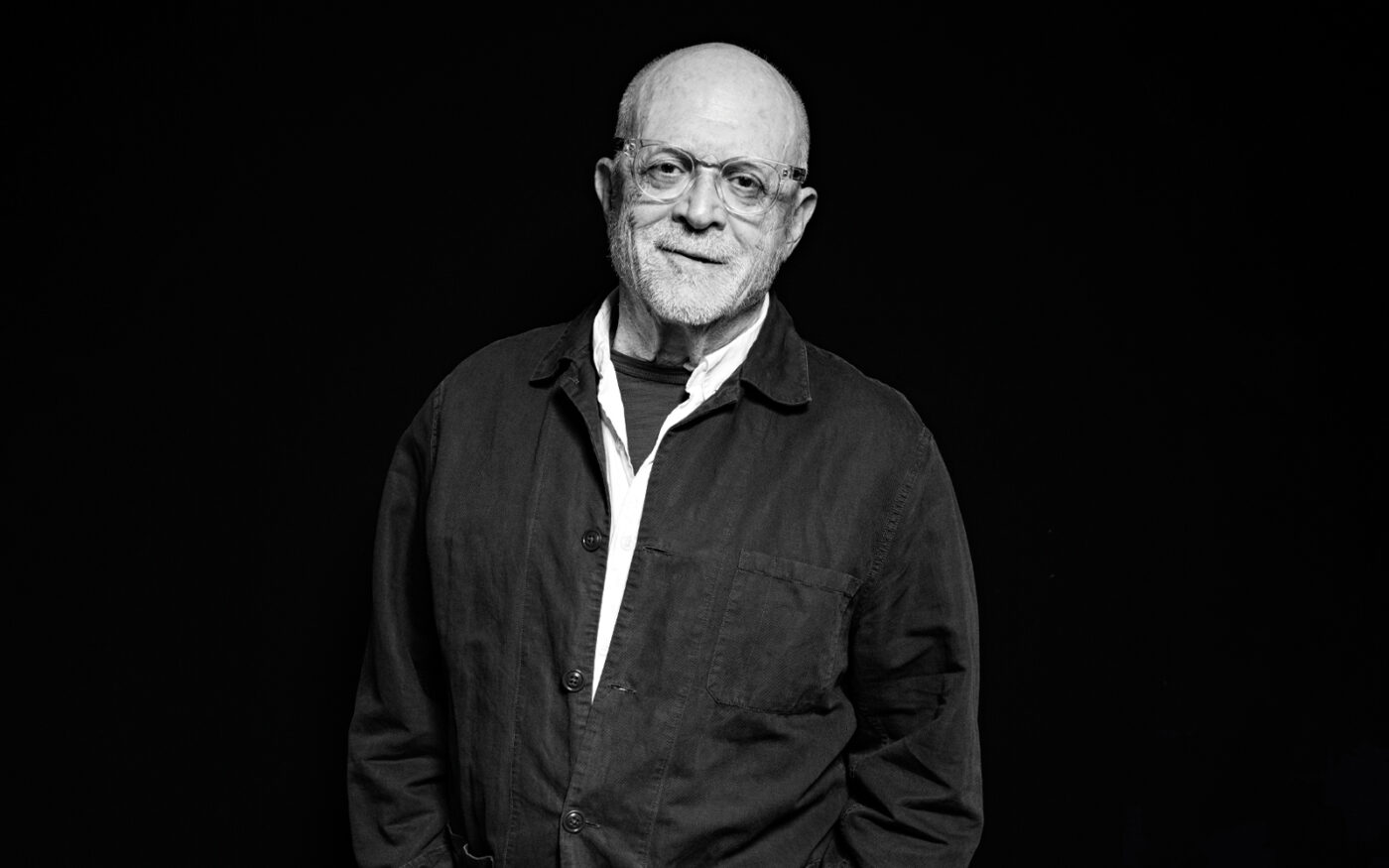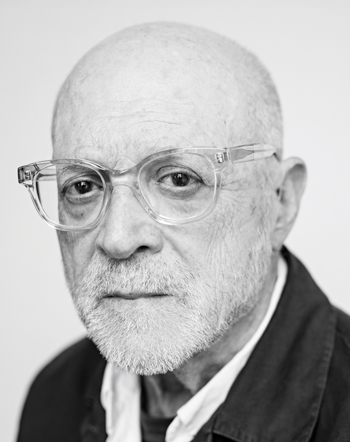Trending
The Closing: Mickey Drexler
The design impresario talks good marketing, bad malls, the best brands and more

Lift the curtain on an iconic retailer — Gap, Old Navy, J. Crew — and more likely than not, you’ll find Mickey Drexler has been there, playing the Wizard.
Drexler cuts a softer figure in person than his resume might suggest. Maybe that’s because he’s back in startup mode, heading up the “art-centric” Alex Mill, a clothing brand founded by his son.
From a design studio in Manhattan, Drexler is once again bringing his product and marketing chops, but the world is different now. When Drexler left Gap — “fired with one day’s notice,” he says — the flagship brand had more than 1,500 North American outlets. There are fewer than 500 today.
The social-media age, fast-fashion culture, they’ve all brought a new ethos around style and clothing and retail that Drexler acknowledges. Still: “I never saw data design clothes.”
Although it’s well within the casual-cool vein Drexler pioneered at the Gap, the Alex Mill brand does take a new approach. No windowless stores in mid-tier malls, no franchises. “I don’t look at department stores,” Drexler says. “We sell some, ’cause we have to hit minimums. But what purpose do they serve?”
The Real Deal caught up with the merchant prince on all things retail and branding, and also dove into his maverick life and career.
Born: August 17, 1944
Hometown: The Bronx
Lives: Manhattan
Family: Married, two adult children
What were you like growing up?
I grew up with a mom who was very ill for many years. I always wanted to escape from my apartment. I was lucky my three aunts lived down the street. It was like a kibbutz — I had seven cousins. I lived a lot of the time in my fantasies, because I didn’t really want to live in [the Bronx]. In hindsight, I wouldn’t have traded it. But I would have traded it for the 20-plus years I was there.
You didn’t really make serious money until you were in your 40s.
I went to the Gap. I never did it to make the money, I did it to have what I considered an opportunity. Now, I don’t know, people, they do those coins or whatever. The inventors of technology. Terrific for them.
I knew Steve [Jobs] — Steve never chased the money. Just do what you love to do and do it well, and be creative. In any job in the world, creativity drives the movement.
You were on the board at Apple. How did that happen?
I wasn’t that smart about it. I didn’t want to be on the board of the public company. [Steve] was a very seductive guy. He came to me and says, “You join my board, and I will join the Gap board.” Boom, yes. Because I knew he’s a disrupter. He says what he thinks.
“In any job in the world, creativity drives the movement.”
Apple didn’t have a retail business at that point.
He wanted one, he had a vision. Quickly-ish, they designed a store, I went to see it. And I said, this is awful. It really was. And then we designed the store together from scratch. And it’s still the same store — a simple background, the right products, timeless. At the beginning, he would ask me what colors I liked in the iPod. The reality is I don’t know much about technology at all. I used to use a Blackberry. Then I bought an iPad, but I hid the Blackberry behind the iPad.
When you were at J. Crew, it was one of the biggest publishers in the world, with its catalogs. Was the catalog business bigger than the store business?
Oh, no. Those were the days where every single one of us opened too many stores. At Gap, they were pretty close to each other. We all made huge mistakes on the stores. The business got tougher. The shopping malls… you know, the important ones are still very important. But there’s a lot of tertiary.
What’s your sense of where the retail market is at?
I don’t know. I don’t know what the next iteration is. My sense is there’s way too much discount today.
You mean discount clothes? Fast fashion?
Not just that. Most brands that sell wholesale to department stores, their biggest customer is not the department store. I think it’s T.J. Maxx. I always wanted to not have goods that could be marked down. I think you have to own the goods. But fashion is out of style these days with investors. Most of them understand numbers, they understand profit, they understand short term. But no business gets built short term.
At the Gap, you took the business from $400 million to $15 billion. And then you were gone.

Fired with one day’s notice. Had a rough year. Most people don’t look beyond the tip of the nose in terms of profit, earnings. And the irony is the night before I was fired, I presented the new collection. I knew the turnaround was there, you feel the goods. Steve Jobs called me that night — you have to tell all your directors — so he called and said, “You’re getting fired tomorrow. Go call Don.” I called Don [Fisher, co-founder of the Gap].
I had no idea if I had a contract or not. The next day at the press conference, the analysts or whoever asked me and I said, “I really don’t know,” and then someone said, “He doesn’t.”
Then Don said, “Can I see you?” And, bless his heart. He said he made a mistake firing me.
After how long?
He told me [that I was fired] Tuesday morning before the board meeting. Wednesday we had the press conference. So it was Wednesday, probably about 11 o’clock.
You famously advised Kanye West not to partner with Gap.
And I got my ass kicked by Gap. I said it live [on Yahoo Finance], and they were on a board meeting.
Why was that your advice?
I used to know [Kanye] a bit. It was clear it was oil and water. Big company, creative genius. But Kanye called me a couple of times to complain, so I said, you should have asked me beforehand, and then I fixed him up with my good friend, the then-chairman. And obviously the rest is history.
How would you like to be remembered?
I have two words I love: mentor and mensch. That’s the biggest compliment I can get.
What about in the fashion industry specifically?
Well, I’m not a fashionista. I’m a product person. My mission is always to have someone come into our shops [or] online and not be able to look bad when they leave. It’s always timeless clothes for me.
If you weren’t in fashion, what would you do?
Cars. There’s an absence of good design in automobiles today. I can’t tell the difference from one to the other. In the ’60s, ’50s, you always knew the new cars, it was a big deal. Now there’s very few beautiful cars.
“Mickey Drexler” became a brand in and of itself. Do you think that helped grow your businesses?
I never think that way. Now I realize more, maybe because I’m the older guy on the team, if you think that way then it’s over. I love doing interviews and teaching people and telling them the truth. But I think what drives something is the merchandise. CEOs, some of them want to be celebrities, but they’re all transparent. I don’t take myself that seriously.
As a New Yorker, do you think it’s possible to build a fashion brand in, say, Kansas City?
I favor New York. I favor speed. Energy. Street smart EQ.
People are running to Austin or [wherever]. I lived in San Francisco for 18 years. I couldn’t wait to get back. I always favored New Yorkers. Now, that might not be true anymore, people have changed. But I liked the New York grit, I liked the fact that there is a very big sense of humor here. We did [the Gap] in San Francisco, but we had all the creatives in Manhattan.
“CEOs, some of them want to be celebrities, but they’re all transparent. I don’t take myself that seriously.”
Designers are into very visible branding these days. What’s your take on logo-mania?
My opinion: Keep it simple, be discreet. But you know, Ralph [Lauren] built an empire with Polo. Lacoste could have been, with the alligator, but it takes some vision. But the handbag business, which is theoretically a small thing, I’ve been told it’s 60 to 70 percent [of some companies’ business]. I think most of it is driven by the logos and the prices. There’s a really great men’s company, I’m stunned with the retails. I would never spend that. You need a mortgage to buy a jacket. But you know, people aspire, and that’s a very easy way to get status.
What trends do you think you’ll be remembered for?
Well, I got knocked down, I got up a lot of times. But, casual dressing. No ties. The Individuals of Style campaign at Gap was incredibly successful. You had all these cool, semi-known people wearing casual clothes, not just Gap but other things. And when good marketing has an impact, there’s action beyond it.
If you could buy three brands tomorrow, what would they be?
Hanes T-shirts. I think Lacoste could be [one]. And, I mean, this is out of left field — Penguin. I never think of it, it’s just that it’s fun, that little penguin.
The value of retail space has been dropping for years. What do you think would help it to recover?
Well, it didn’t go any place for good companies. I think half the retailers should maybe go out of business. I don’t want to insult anyone, but I always say to myself, “What would one do if this company went away? Would you miss it?” No, for a fair amount of companies. What purpose do they serve, whatever the product is, in the world? If you have some uniqueness, emotion, you communicate with your customers, and you look at everything through the lens of a customer, you will succeed.




